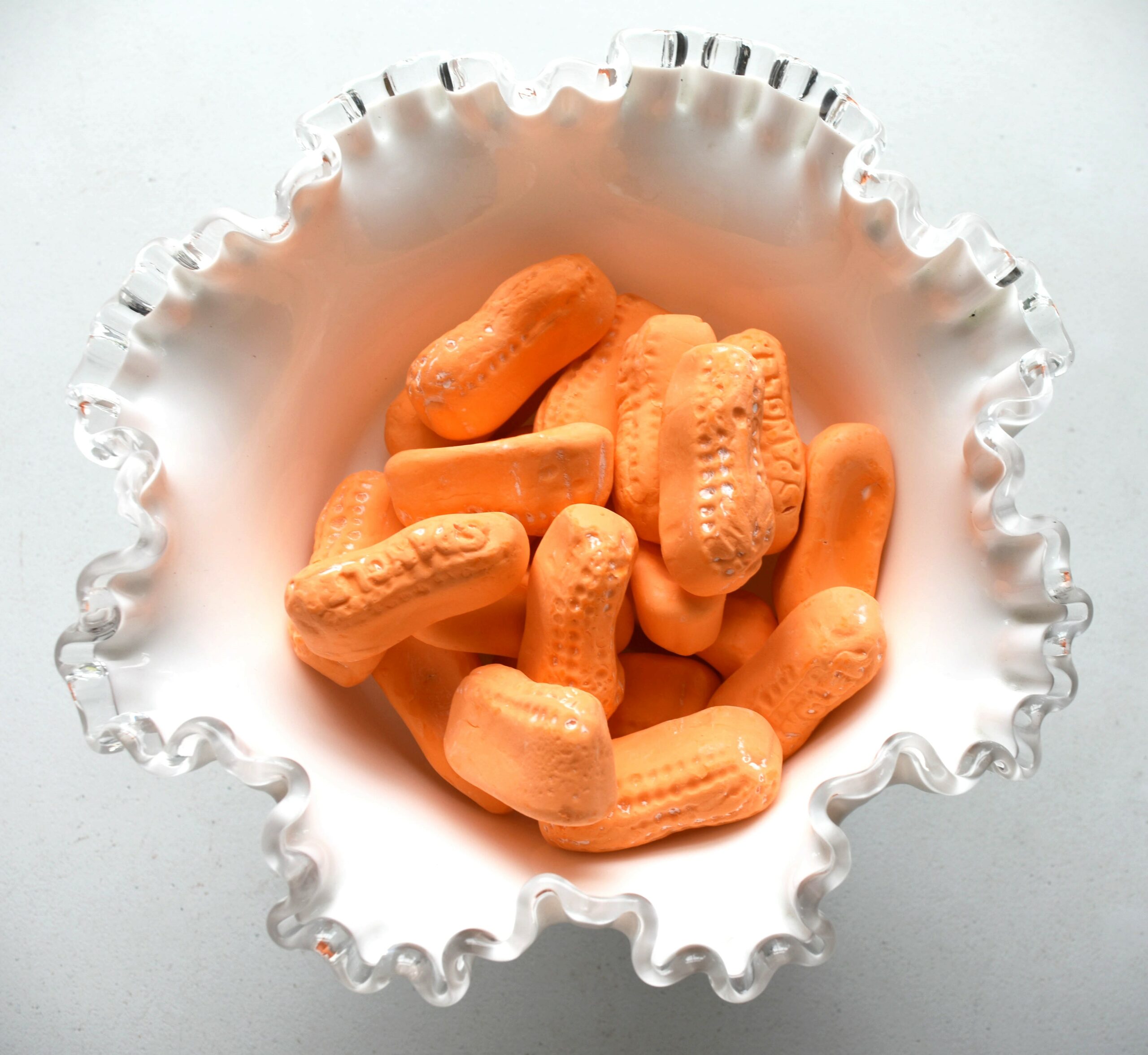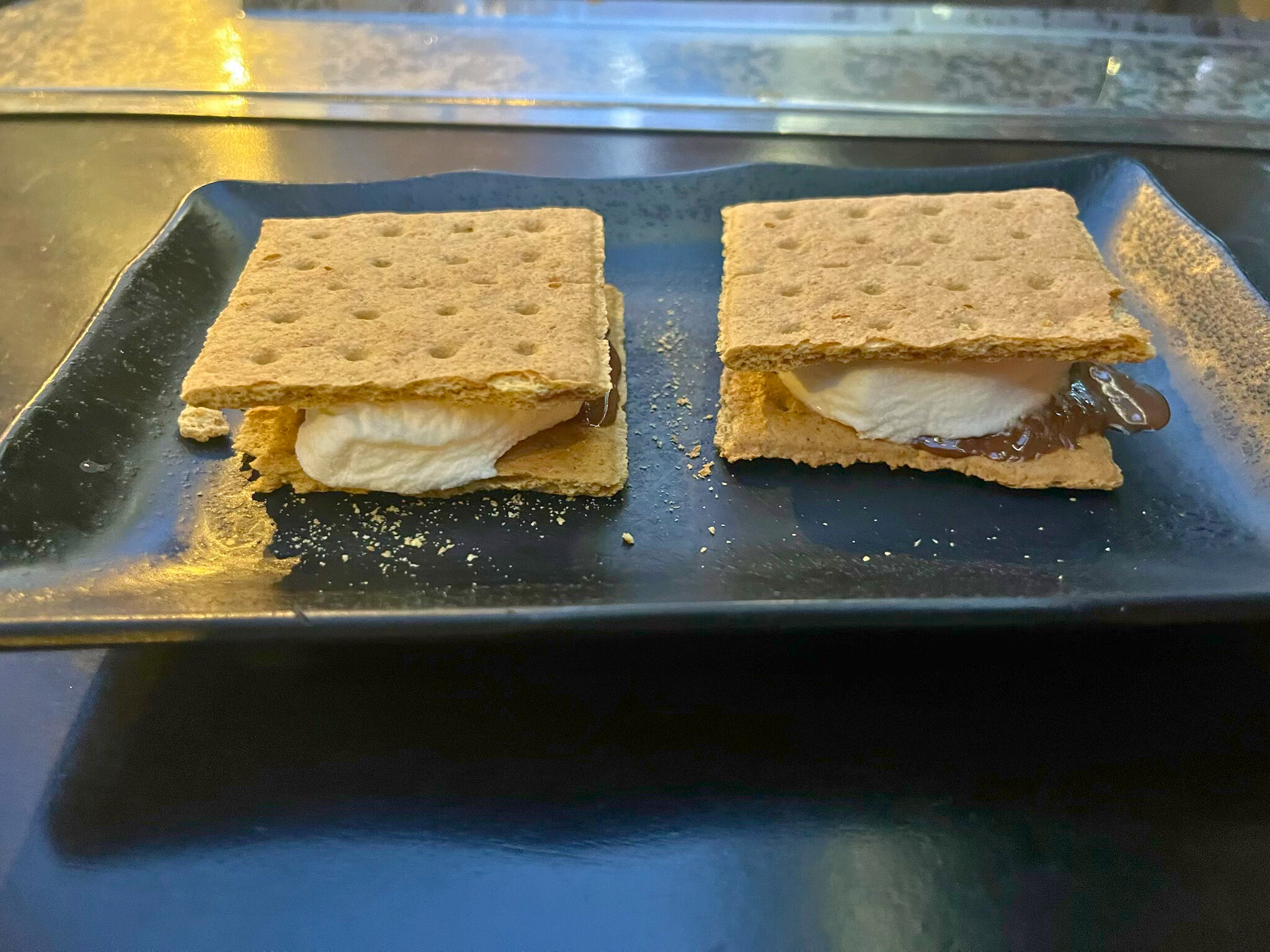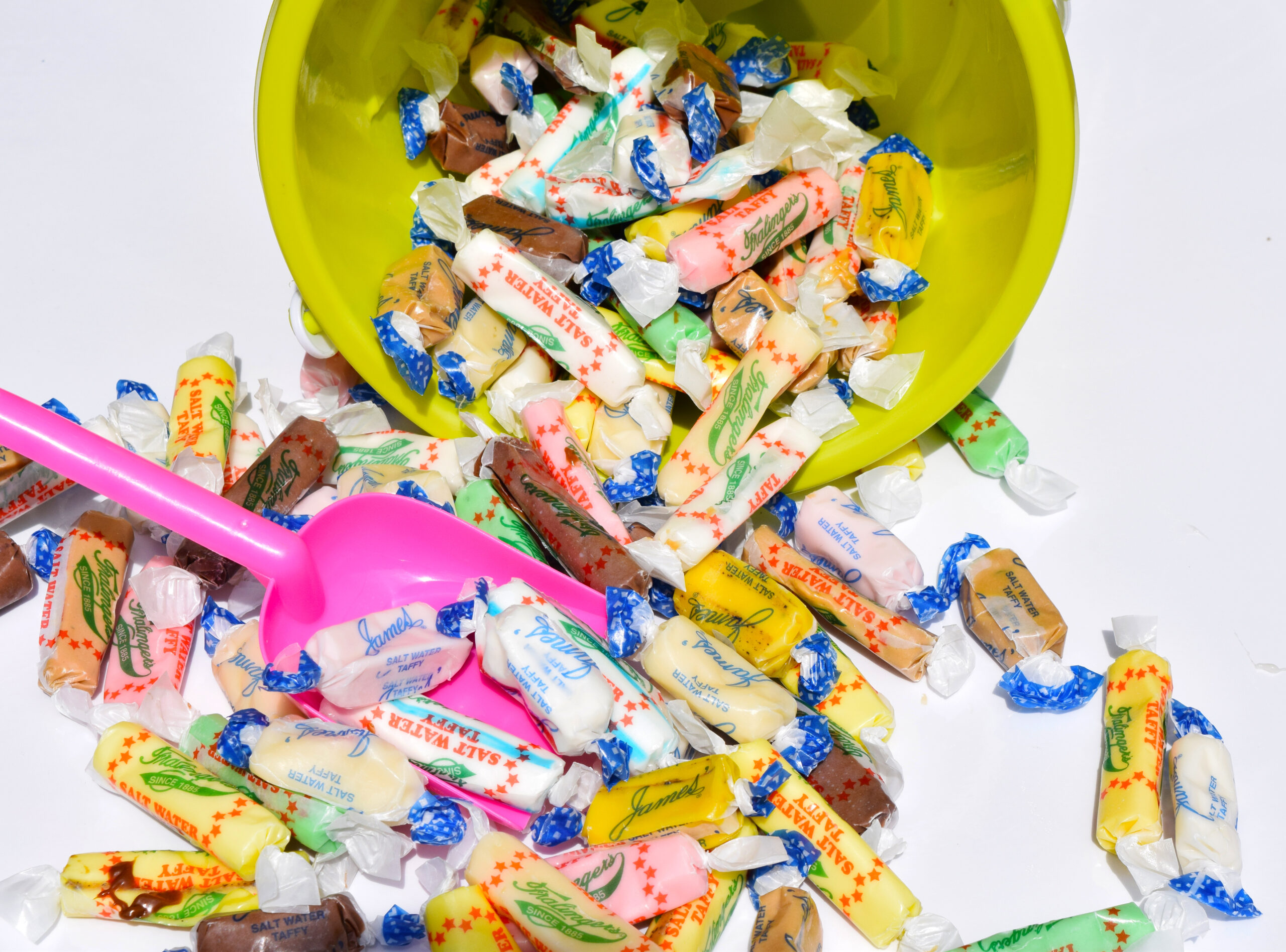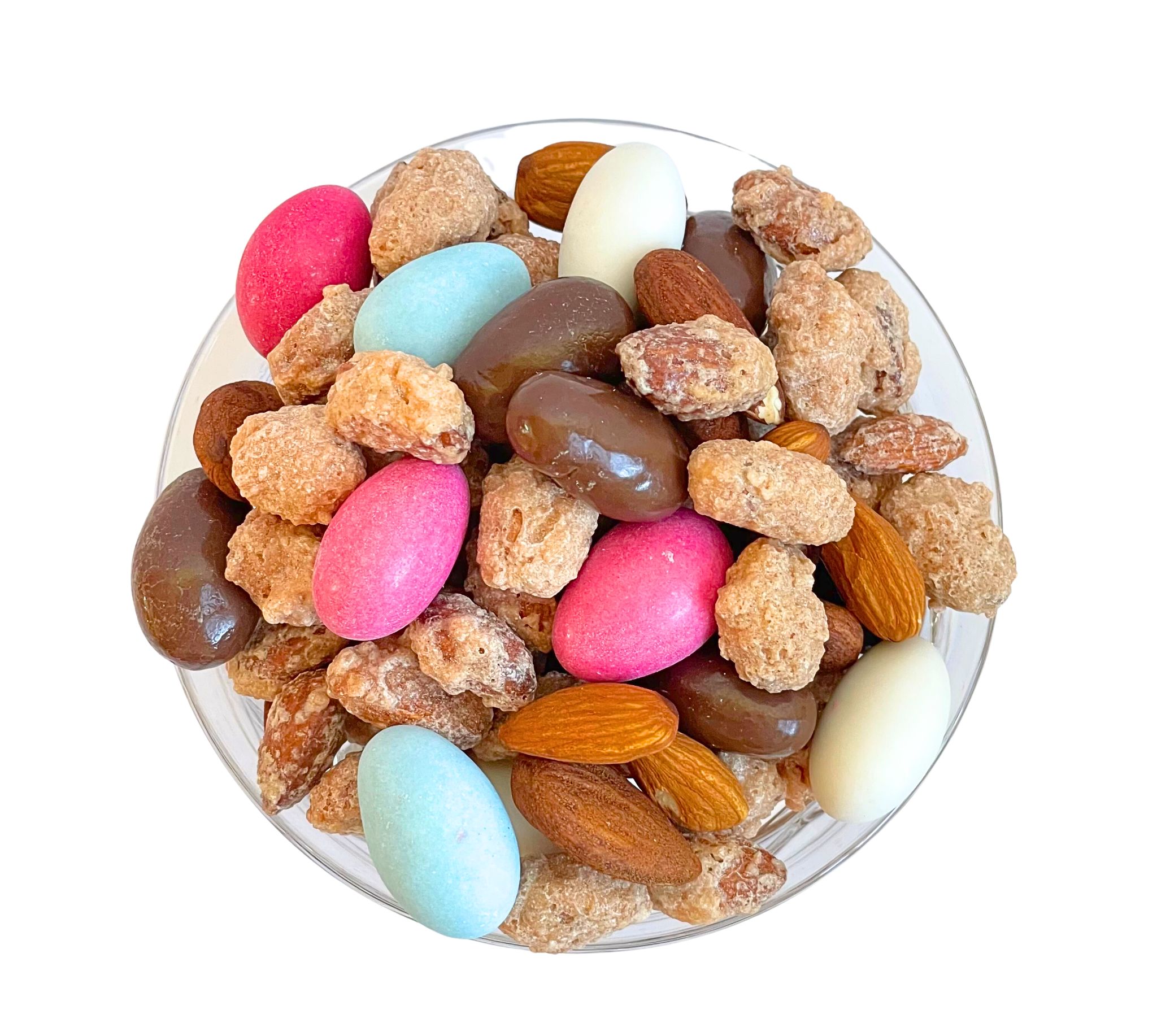(From Susan’s upcoming book “Fun Foods of America” Summer, 2024)
More than any other candy, Circus Peanuts are loved and loathed and overall perplexing. The texture is soft as a sponge, spongy as a marshmallow, flavored like a banana, and shaped like a peanut. The name is “peanut” but is peanut-less. This curious candy originated in the late 1800s, made for spectators at traveling circuses. The reasoning went like this: circuses had elephants and elephants eat peanuts. So why not enjoy peanut-shaped candy that doesn’t contain peanuts? Logic aside, Circus Peanuts also took off in penny candy stores, general stores, and cereal bowls where they became the prototype for Lucky Charm cereal.

Circus Peanuts: From the Big Ring to Cereal Bowls
In the early 1960s, in Minneapolis, Minnesota, home to the Mall of America, Mary Tyler Moore, Jesse Ventura, and the Artist Formerly Known as Prince, came a star of its own, Lucky the Leprechaun. Lucky’s very existence rested on the controversial circus peanut and an event that occurred yes, right there, not only in Minnesota but at the General Mills’ campus, on the street named for another product mascot, as unreal as the cartoon Leprechaun, Betty Crocker Drive. It was there that General Mills’ managers instructed their product developers to come up with a new cereal using either the company-made Wheaties or Cheerios. The cereal had to be unique, and marketable, and kids had to love them.
Hard at work, product developer John Holahan got an idea. He took some of his favorite candies, Brach’s circus peanuts, chopped them into pieces, and put them into a bowl of Cheerios. Eureka. They were amazing. Or anyway, kids would think they were amazing. And they had their own tagline: “Magically delicious.” Whatever they were, the company gave them shapes, colors, and an abbreviated name, going from “marshmallow bits” to “marbits.”

Circus Peanuts: The Controversy. The Irony.
The irony of circus peanuts is that they reign up there with candy corn as one of the most controversial candies around. The controversy is generational: people over 60 seem to like circus peanuts because of its high nostalgic factor. Their parents and, especially, grandparents loved them, and each ultra-sugary mouthful returns them to happy moments of the past. Younger people: they don’t know what circus peanuts are and, if they do, don’t like them. They’re too sweet. Too mushy. As for the irony: they don’t like circus peanuts, but they LOVE marbits. In fact, marbits lunged Lucky Charms to fun foods stardom, now popular in “cereal bars” i.e. candy bars, popcorn, and solo as actual marshmallows and marbits, to name just a few.
Does the popularity of marbits guarantee the longevity of circus peanuts? Certainly not. But it does ensure their legacy.

URL for Lucky Charms Cereal: Lucky Charms. (2023, October 7). In Wikipedia. https://en.wikipedia.org/wiki/Lucky_Charms








 Then one dark night, a storm swept up from the sea, flooding shops along the boardwalk. One belonged to John Ross Edminston, a postcard and taffy merchant. Legend has it, Edminston was cleaning up the next morning when a little girl stopped by asking for taffy. Looking at the taffy floating in the debris, Edminston shook his head and said these immortal words: “I only have ‘salt water’ taffy.” Then, he thought, the name sounds right. So, beach-like and fun. But add salt water? To taffy? Not so right.
Then one dark night, a storm swept up from the sea, flooding shops along the boardwalk. One belonged to John Ross Edminston, a postcard and taffy merchant. Legend has it, Edminston was cleaning up the next morning when a little girl stopped by asking for taffy. Looking at the taffy floating in the debris, Edminston shook his head and said these immortal words: “I only have ‘salt water’ taffy.” Then, he thought, the name sounds right. So, beach-like and fun. But add salt water? To taffy? Not so right.











